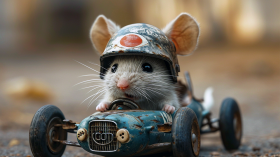Super slow-motion video has captured how moths are able to fly in a suspended hover in a highly synchronized ballet of wing beating and belly flexing, and researchers say the technique may be applied to the engineering of flying robots.
According to a BBC report on a recent study, the hawk moth (Manduca sexta) is able to hover by pivoting its abdomen up and down to fine-tune the effects of the forces that keep the insect suspended in flight.
Although moths are relatively large for insects, study author Jonathan Dyhr of the University of Washington said they are "incredibly good at hovering."
"A moth can really precisely control movements [and remain] in one place, because it's trying to feed from flowers," he said, according to BBC.
To study the moth, the researchers had to trick it into thinking that it was tumbling through the sky by putting the insect through a simulation that made the moth perceive it was tumbling forwards or backwards.
Studying the moth with a super slow-motion camera revealed that the insect pivoted its abdominal region up and down to keep itself balanced.
In an article published in The Journal of Experimental Biology, the authors wrote, "Our experiments and models suggest a novel mechanism by which articulation of the body or 'airframe' of an animal can be used to redirect lift forces for effective flight control."
The researchers also indicate that their discovery will aid in the engineering of flying robot systems that use the same principles, the BBC reported.
Check out a video of the moth flying slow motion here.
© 2024 NatureWorldNews.com All rights reserved. Do not reproduce without permission.





